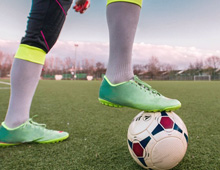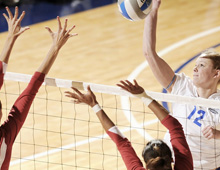Do Back Braces Help Lower Back Pain?

Lower back pain is a common problem that affects millions of people worldwide. It can be caused by various factors, such as injury, overuse, poor posture, stress, aging, or underlying conditions. Lower back pain can interfere with your daily activities, reduce your quality of life, and lead to chronic complications if left untreated.
One of the possible treatments for lower back pain is using a back brace. A back brace is a device that supports your spine and limits its movement, which can help reduce pain and promote healing. But do back braces really help lower back pain? How do they work, and when should you use them? What are the different types of back braces, and how do you choose the right one for you? In this blog post, we will answer these questions and more, based on the latest research and expert opinions.
Benefits of Using Back Braces
A back brace can provide several benefits for people with lower back pain, such as:
● To support your spine
A back brace can add stability to your spine and prevent it from moving in ways that can cause or worsen pain. By holding your spine in a safe and comfortable position, a back brace can also help correct your posture and redistribute the weight on your spine, which can reduce the pressure on your discs, joints, muscles, and nerves.
● To relieve tension
A back brace can help relax your muscles and ease the tension that often accompanies lower back pain. By reducing the muscle spasms and inflammation, a back brace can also help improve blood circulation and oxygen delivery to the affected area, which can speed up the healing process and reduce the risk of further damage.
● To minimize movement in the spine
A back brace can help limit the range of motion and micro-motions in your spine, which can prevent or reduce the slippage and compression of your vertebrae, discs, or nerves. This can help prevent or treat conditions such as herniated discs, spinal stenosis, spondylolisthesis, or compression fractures, which are common causes of lower back pain.
Back braces may also be helpful for individuals with the following conditions:
● Scoliosis
A back brace can help prevent or slow down the progression of spinal curvature in people with scoliosis, especially during the growth spurt. A back brace can also help improve the appearance and function of the spine, and reduce the need for surgery in some cases.
● Osteoporosis
A back brace can help prevent or treat compression fractures in people with osteoporosis, which is a condition that causes the bones to become weak and brittle. A back brace can also help reduce the pain and disability associated with compression fractures, and improve the posture and balance of the spine.
● Post-surgery
A back brace can help support and protect the spine after a surgery, such as spinal fusion, laminectomy, or discectomy. A back brace can also help reduce the pressure and stress on the surgical site, and prevent excessive movement and micro-motions that can interfere with the healing process.
When to Consider Wearing a Back Brace
There are many possible causes of lower back pain, and not all of them require or benefit from wearing a back brace. Therefore, it is important to consult with your doctor before using a back brace, and follow their instructions on how and when to use it. A back brace should be used as part of a comprehensive treatment plan, which may also include medication, physical therapy, exercise, lifestyle changes, and other modalities.
Some of the common causes of lower back pain are:
● Muscle or ligament strain
This is the most common cause of lower back pain, and it usually occurs due to overuse, injury, or poor posture. The pain is usually localized and sharp, and it may be accompanied by muscle spasms, stiffness, or inflammation. A back brace can help reduce the pain and tension in the muscles and ligaments, and prevent further injury or strain. However, a back brace should not be used for too long, as it may weaken the muscles and reduce their flexibility.
● Herniated disc
This is a condition where the soft inner material of a disc bulges out through a tear in the outer layer, and presses on a nerve root. The pain is usually radiating and shooting, and it may be accompanied by numbness, tingling, or weakness in the leg. A back brace can help reduce the pressure and compression on the disc and nerve, and limit the movement and micro-motions that can aggravate the condition. However, a back brace should not be used as a substitute for other treatments, such as medication, physical therapy, or surgery, which may be necessary to resolve the problem.
● Spinal stenosis
This is a condition where the space within the spinal canal or the openings for the nerve roots narrows, and causes pressure on the spinal cord or nerves. The pain is usually chronic and dull, and it may be accompanied by numbness, tingling, or weakness in the legs. The pain may also worsen with standing, walking, or bending backward. A back brace can help reduce the pressure and compression on the spinal cord or nerves, and limit the movement and micro-motions that can worsen the condition. However, a back brace should not be used as a substitute for other treatments, such as medication, physical therapy, or surgery, which may be necessary to relieve the symptoms and prevent complications.
● Spondylolisthesis
This is a condition where one vertebra slips forward over another, and causes instability and misalignment of the spine. The pain is usually localized and sharp, and it may be accompanied by numbness, tingling, or weakness in the legs. The pain may also worsen with standing, walking, or bending forward. A back brace can help reduce the slippage and instability of the vertebrae, and limit the movement and micro-motions that can aggravate the condition. However, a back brace should not be used as a substitute for other treatments, such as medication, physical therapy, or surgery, which may be necessary to correct the problem and prevent further damage.
Should you wear a back brace if you have lower back pain?
The answer to this question depends on several factors, such as the cause, severity, duration, and location of your lower back pain, as well as your medical history, physical condition, and personal preference. In general, a back brace may be helpful for lower back pain if:
● You have a specific diagnosis that can benefit from bracing, such as herniated disc, spinal stenosis, spondylolisthesis, scoliosis, osteoporosis, or post-surgery.You have acute or subacute lower back pain that is severe, disabling, or interfering with your daily activities, and you need temporary support and relief while you recover or seek other treatments.
● You have acute or subacute lower back pain that is severe, disabling, or interfering with your daily activities, and you need temporary support and relief while you recover or seek other treatments.You have chronic lower back pain that is mild to moderate, and you need occasional support and relief when you perform certain activities that may trigger or worsen your pain, such as lifting, bending, or standing for long periods.
● You have chronic lower back pain that is mild to moderate, and you need occasional support and relief when you perform certain activities that may trigger or worsen your pain, such as lifting, bending, or standing for long periods.
However, a back brace may not be helpful or advisable for lower back pain if:
● You have nonspecific or undiagnosed lower back pain that is mild, intermittent, or manageable with other treatments, such as medication, exercise, or heat therapy.
● You have lower back pain that is caused by a serious or progressive condition that requires immediate or aggressive treatment, such as infection, tumor, fracture, or cauda equina syndrome.
● You have lower back pain that is accompanied by other symptoms that indicate a potential emergency, such as fever, chills, weight loss, night sweats, bladder or bowel dysfunction, saddle anesthesia, or severe or progressive neurological deficits.
● You have a medical condition that may contraindicate the use of a back brace, such as skin infection, allergy, diabetes, or poor circulation.
Conditions That Can Benefit from Back Brace
As mentioned above, some of the conditions that can benefit from bracing are:
● Herniated disc
● Spinal stenosis
● Spondylolisthesis
● Scoliosis
● Osteoporosis
● Post-surgery
These conditions can cause lower back pain by compressing or irritating the spinal structures, such as the discs, joints, nerves, or muscles. A back brace can help reduce the compression or irritation by supporting the spine, relieving the tension, and minimizing the movement in the affected area.
How often should you wear a back brace?
The frequency and duration of wearing a back brace depend on several factors, such as the type and purpose of the brace, the severity and stage of your condition, the recommendations of your doctor, and your personal comfort and preference. In general, you should follow these guidelines when wearing a back brace:
● Wear it only as prescribed or instructed by your doctor. Do not wear it longer or more often than recommended, as it may cause adverse effects, such as muscle weakness, stiffness, or dependence.
● Wear it only when you need it. Do not wear it all the time, as it may interfere with your normal activities, mobility, and healing. Wear it only when you perform certain activities that may trigger or worsen your pain, such as lifting, bending, or standing for long periods.
● Wear it properly. Make sure the brace fits you well and is comfortable and secure. Adjust the straps or fasteners as needed to ensure the right level of support and compression. Do not wear it too tight or too loose, as it may cause skin irritation, circulation problems, or ineffective support.
● Wear it with care. Keep the brace clean and dry, and wash it regularly according to the manufacturer's instructions. Avoid exposing the brace to direct sunlight, heat, or moisture, as it may damage the material or function of the brace. Check the brace regularly for signs of wear and tear, and replace it if needed.
Different Types of Back Braces
There are different types of back braces available, depending on the purpose and function of the brace. Some of the common types of back braces are:
● Rehabilitative Braces
These are braces that are used to support and protect the spine after a surgery or injury, such as spinal fusion, laminectomy, or discectomy. They are usually rigid or semi-rigid, and cover most of the spine, from the neck to the pelvis. They are designed to limit the movement and micro-motions of the spine, and prevent excessive stress and strain on the surgical site. They are usually worn for several weeks or months, depending on the healing process and the doctor's instructions.
● Functional Braces
These are braces that are used to support and stabilize the spine for people with chronic or recurrent lower back pain, such as herniated disc, spinal stenosis, spondylolisthesis, scoliosis, or osteoporosis. They are usually flexible or elastic, and cover only part of the spine, such as the lower back or the lumbar region. They are designed to provide compression and relief for the spine, and improve the posture and alignment of the spine. They are usually worn for several hours or days, depending on the severity and frequency of the pain and the doctor's instructions.
Expert Opinions on Back Brace Usage
Back brace usage is a controversial topic among experts, as there is no definitive evidence or consensus on its effectiveness and safety for lower back pain. Some experts believe that back braces can help lower back pain by providing support and stability for the spine, relieving tension and inflammation, and promoting healing and recovery. They also believe that back braces can help prevent or reduce the risk of further injury or complications, and improve the quality of life and function of the spine. They recommend using back braces as part of a comprehensive treatment plan, which may also include medication, physical therapy, exercise, lifestyle changes, and other modalities.
However, some experts are skeptical or critical of back brace usage, as they think that back braces can do more harm than good for lower back pain. They argue that back braces can cause adverse effects, such as muscle weakness, stiffness, or dependence, skin irritation, circulation problems, or ineffective support. They also argue that back braces can delay or interfere with the natural healing process of the spine, and mask the underlying cause or problem of the pain. They suggest using back braces only as a last resort, and only for a short period of time, and focus on other treatments that can address the root cause and improve the condition of the spine.
Common Concerns and Misconceptions About Back Braces
There are some common concerns and misconceptions about back braces that may prevent or discourage people from using them for lower back pain. Some of these are:
● Back braces are uncomfortable and bulky.
This is not necessarily true, as modern back braces are designed to be comfortable and discreet, and fit well under your clothes. They are also made of breathable and lightweight materials, and have adjustable straps and fasteners, to ensure the right level of support and compression. You may feel some discomfort or pressure when you first wear a back brace, but this is normal and expected, and it will subside as you get used to it.
● Back braces are expensive and hard to find.
This is not necessarily true, as back braces are widely available and affordable, and you can find them in various places, such as online stores, pharmacies, medical supply stores, or orthopedic clinics. You can also get a prescription from your doctor, and have your insurance cover part or all of the cost of the brace. However, you should be careful and selective when buying a back brace, and make sure it is suitable and effective for your condition, and meets the quality and safety standards.
● Back braces are a cure for lower back pain.
This is not true, as back braces are not a cure for lower back pain, but rather a temporary and supplementary treatment that can help reduce the pain and promote the healing. Back braces cannot address the root cause or problem of the pain, and they cannot prevent or reverse the damage or degeneration of the spine. Therefore, you should not rely solely on back braces for lower back pain, but rather use them as part of a comprehensive treatment plan, which may also include medication, physical therapy, exercise, lifestyle changes, and other modalities.
How to Choose the Right Back Brace
Choosing the right back brace for lower back pain can be challenging, as there are many factors to consider, such as the type, size, style, material, function, and cost of the brace. Therefore, it is important to consult with your doctor before buying a back brace, and follow their recommendations on how to choose and use it. Here are some general tips on how to choose the right back brace for lower back pain:
● Know your condition and purpose
You should know the cause, severity, duration, and location of your lower back pain, and the purpose and goal of using a back brace. This will help you narrow down your options and select the type and function of the brace that suits your condition and purpose. For example, if you have a herniated disc and you need to limit the movement and micro-motions of your spine, you may choose a rigid or semi-rigid brace that covers most of the spine. If you have chronic lower back pain and you need to provide compression and relief for your spine, you may choose a flexible or elastic brace that covers only part of the spine.
● Know your size and fit
You should know your measurements and fit, and choose the size and style of the brace that fits you well and is comfortable and secure. You can measure your waist circumference, hip circumference, and spine length, and compare them with the size chart of the brace. You can also try on the brace and adjust the straps or fasteners as needed to ensure the right level of support and compression. You should not choose a brace that is too tight or too loose, as it may cause skin irritation, circulation problems, or ineffective support.
● Know your material and quality
You should know the material and quality of the brace, and choose the material and quality that is breathable, lightweight, durable, and easy to clean. You should also check the material and quality of the other components of the brace, such as the straps, fasteners, pads, or inserts, and make sure they are strong, secure, and comfortable. You should avoid choosing a brace that is made of cheap or low-quality material, or has defective or damaged components, as it may cause skin irritation, allergic reaction, or ineffective support.
Exercises and Lifestyle Changes Complementing Back Brace Use
Using a back brace for lower back pain can be helpful, but it is not enough to treat the pain and improve the condition of the spine. You should also complement the back brace use with exercises and lifestyle changes, which can help strengthen your spine, improve your posture, and prevent or reduce the risk of further injury or complications. Here are some exercises and lifestyle changes that can complement the back brace use:
● Stay active
You should stay active and avoid prolonged sitting or standing, as it may worsen your lower back pain and stiffness. You should also avoid activities that may trigger or aggravate your pain, such as lifting, bending, or twisting. You should do some low-impact aerobic exercises, such as walking, swimming, or cycling, which can help improve your blood circulation and oxygen delivery, and reduce your inflammation and pain. You should also do some stretching exercises, such as cat-cow, child's pose, or pelvic tilt, which can help loosen your muscles and joints, and improve your flexibility and range of motion.
● Strengthening exercises
Strengthening exercises can help lower back pain by improving the stability and support of your spine, and by reducing the pressure and strain on your discs, joints, nerves, or muscles. You should perform strengthening exercises that target your core muscles, such as your abdominal, back, pelvic, and hip muscles, as they are responsible for holding and moving your spine. You should also perform strengthening exercises that target your lower extremity muscles, such as your gluteal, hamstring, quadriceps, and calf muscles, as they are responsible for supporting and moving your lower body. You should perform strengthening exercises at least two to three times a week, and follow the proper technique and intensity. You should also consult with your doctor or physical therapist about the type and frequency of strengthening exercises that are suitable for your condition and fitness level.
● Good posture
Good posture can help lower back pain by maintaining the natural alignment and curvature of your spine, and by distributing the weight and pressure evenly on your spine. You should practice good posture when you stand, sit, walk, or perform any activity, and avoid slouching, hunching, or twisting your spine. You should also use proper ergonomics and equipment, such as a chair, desk, keyboard, mouse, or phone, that can support your spine and prevent strain or injury. You should also use proper lifting and carrying techniques, such as bending your knees, keeping your back straight, holding the object close to your body, and using your legs to lift or move the object, and avoid lifting or carrying objects that are too heavy or awkward for you.
Cooperation
The above is the relevant introduction and information of Zhongzhi Health, if you need customized sports protective gears, you can contact us. We look forward to cooperating with you to achieve long-term, valuable and win-win cooperation.











